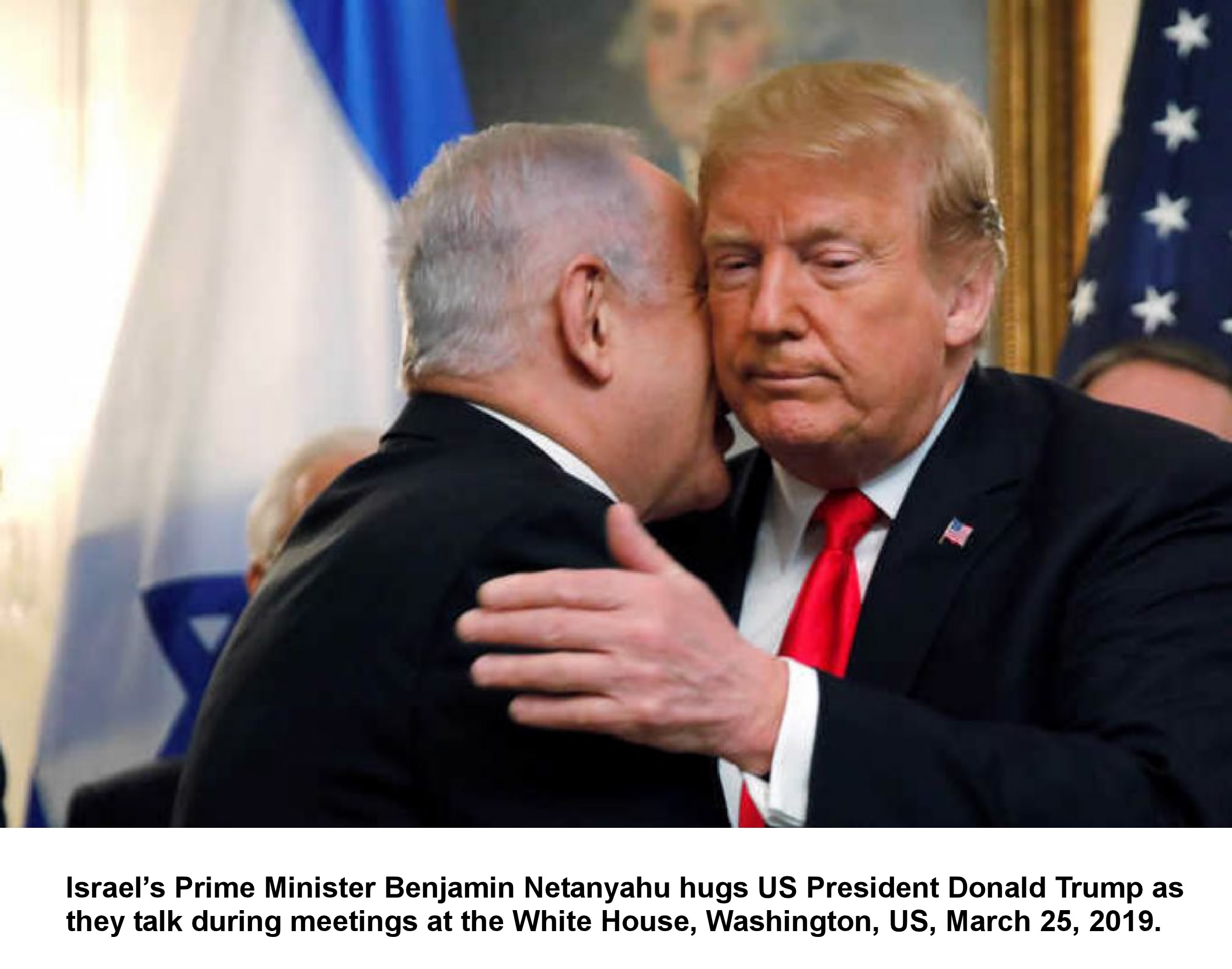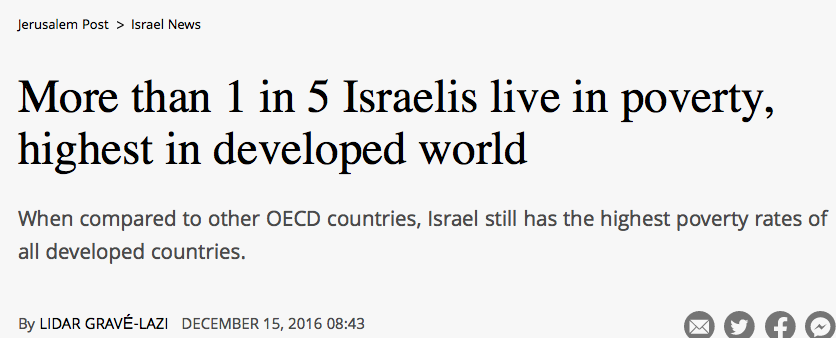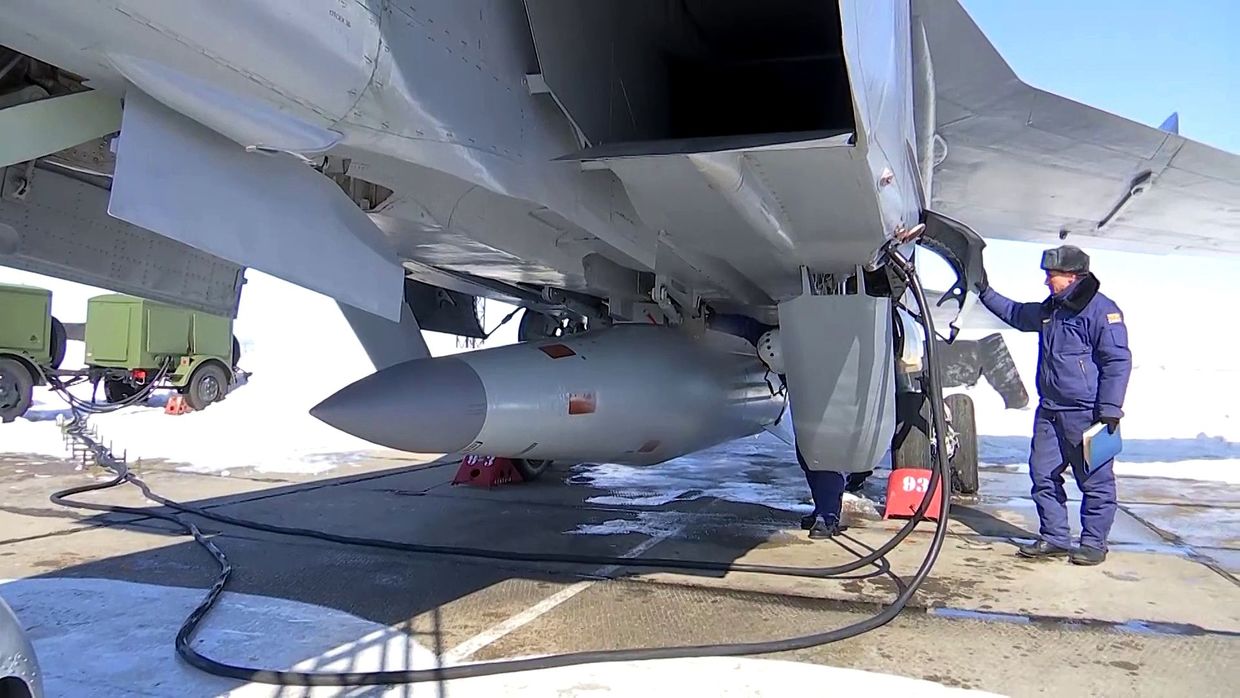[The real story of Pearl Harbor, December 7, 1941, reveals the nature of man’s government. The government lied, destroyed, and murdered and called it protection. To understand Pearl Harbor is to open your eyes to truth. You also need to understand the real story of the USS LIBERTY, June 8, 1967. Also the World Trade Center debacle September 11, 2001. Wars are contrived and orchestrated by liars. Governments need war. War is essential to their ability to exist. War allows them to scare the public to support buildup of military and taxation. Empires rule their citizens and aspire to rule the world. Man’s government is a game of monopoly – a race to acquire power by raping the weak. The Beast System lies, corrupts, and enslaves. It is “the nature of the Beast.” -ed]
Comprehensive research has shown not only that FDR knew in advance of the attack on Pearl Harbor, but that he deliberately withheld its foreknowledge from commanders in Hawaii in the hope that the “surprise” attack would catapult the U.S. into World War II.
On Sunday, December 7, 1941, Japan launched a sneak attack on the U.S. Pacific Fleet at Pearl Harbor, shattering the peace of a beautiful Hawaiian morning and leaving much of the fleet broken and burning. The destruction and death that the Japanese military visited upon Pearl Harbor that day — 18 naval vessels (including eight battleships) sunk or heavily damaged, 188 planes destroyed, over 2,000 servicemen killed — were exacerbated by the fact that American commanders in Hawaii were caught by surprise. But that was not the case in Washington.
Comprehensive research has shown not only that Washington knew in advance of the attack, but that it deliberately withheld its foreknowledge from our commanders in Hawaii in the hope that the “surprise” attack would catapult the U.S. into World War II. Oliver Lyttleton, British Minister of Production, stated in 1944: “Japan was provoked into attacking America at Pearl Harbor. It is a travesty of history to say that America was forced into the war.”
Although FDR desired to directly involve the United States in the Second World War, his intentions sharply contradicted his public pronouncements. A pre-war Gallup poll showed 88 percent of Americans opposed U.S. involvement in the European war. Citizens realized that U.S. participation in World War I had not made a better world, and in a 1940 (election-year) speech, Roosevelt typically stated: “I have said this before, but I shall say it again and again and again: Your boys are not going to be sent into any foreign wars.”
But privately, the president planned the opposite. Roosevelt dispatched his closest advisor, Harry Hopkins, to meet British Prime Minister Winston Churchill in January 1941. Hopkins told Churchill: “The President is determined that we [the United States and England] shall win the war together. Make no mistake about it. He has sent me here to tell you that at all costs and by all means he will carry you through, no matter what happens to him — there is nothing he will not do so far as he has human power.” William Stevenson noted in A Man Called Intrepid that American-British military staff talks began that same month under “utmost secrecy,” which, he clarified, “meant preventing disclosure to the American public.” Even Robert Sherwood, the president’s friendly biographer, said: “If the isolationists had known the full extent of the secret alliance between the United States and Britain, their demands for impeachment would have rumbled like thunder throughout the land.”
Background to Betrayal
Roosevelt’s intentions were nearly exposed in 1940 when Tyler Kent, a code clerk at the U.S. embassy in London, discovered secret dispatches between Roosevelt and Churchill. These revealed that FDR — despite contrary campaign promises — was determined to engage America in the war. Kent smuggled some of the documents out of the embassy, hoping to alert the American public — but was caught. With U.S. government approval, he was tried in a secret British court and confined to a British prison until the war’s end.
During World War II’s early days, the president offered numerous provocations to Germany: freezing its assets; shipping 50 destroyers to Britain; and depth-charging U-boats. The Germans did not retaliate, however. They knew America’s entry into World War I had shifted the balance of power against them, and they shunned a repeat of that scenario. FDR therefore switched his focus to Japan. Japan had signed a mutual defense pact with Germany and Italy (the Tripartite Treaty). Roosevelt knew that if Japan went to war with the United States, Germany and Italy would be compelled to declare war on America — thus entangling us in the European conflict by the back door. As Harold Ickes, secretary of the Interior, said in October 1941: “For a long time I have believed that our best entrance into the war would be by way of Japan.”
Much new light has been shed on Pearl Harbor through the recent work of Robert B. Stinnett, a World War II Navy veteran. Stinnett has obtained numerous relevant documents through the Freedom of Information Act. In Day of Deceit: The Truth about FDR and Pearl Harbor (2000), the book so brusquely dismissed by director Bruckheimer, Stinnett reveals that Roosevelt’s plan to provoke Japan began with a memorandum from Lieutenant Commander Arthur H. McCollum, head of the Far East desk of the Office of Naval Intelligence. The memorandum advocated eight actions predicted to lead Japan into attacking the United States. McCollum wrote: “If by these means Japan could be led to commit an overt act of war, so much the better.” FDR enacted all eight of McCollum’s provocative steps — and more.
While no one can excuse Japan’s belligerence in those days, it is also true that our government provoked that country in various ways — freezing her assets in America; closing the Panama Canal to her shipping; progressively halting vital exports to Japan until we finally joined Britain in an all-out embargo; sending a hostile note to the Japanese ambassador implying military threats if Tokyo did not alter its Pacific policies; and on November 26th — just 11 days before the Japanese attack — delivering an ultimatum that demanded, as prerequisites to resumed trade, that Japan withdraw all troops from China and Indochina, and in effect abrogate her Tripartite Treaty with Germany and Italy.
After meeting with President Roosevelt on October 16, 1941, Secretary of War Henry Stimson wrote in his diary: “We face the delicate question of the diplomatic fencing to be done so as to be sure Japan is put into the wrong and makes the first bad move — overt move.” On November 25, the day before the ultimatum was sent to Japan’s ambassadors, Stimson wrote in his diary: “The question was how we should maneuver them [the Japanese] into the position of firing the first shot….”
The bait offered Japan was our Pacific Fleet. In 1940, Admiral J.O. Richardson, the fleet’s commander, flew to Washington to protest FDR’s decision to permanently base the fleet in Hawaii instead of its normal berthing on the U.S. West Coast. The admiral had sound reasons: Pearl Harbor was vulnerable to attack, being approachable from any direction; it could not be effectively rigged with nets and baffles to defend against torpedo planes; and in Hawaii it would be hard to supply and train crews for his undermanned vessels. Pearl Harbor also lacked adequate fuel supplies and dry docks, and keeping men far from their families would create morale problems. The argument became heated. Said Richardson: “I came away with the impression that, despite his spoken word, the President was fully determined to put the United States into the war if Great Britain could hold out until he was reelected.”
Richardson was quickly relieved of command. Replacing him was Admiral Husband E. Kimmel. Kimmel also informed Roosevelt of Pearl Harbor’s deficiencies, but accepted placement there, trusting that Washington would notify him of any intelligence pointing to attack. This proved to be misplaced trust. As Washington watched Japan preparing to assault Pearl Harbor, Admiral Kimmel, as well as his Army counterpart in Hawaii, General Walter C. Short, were completely sealed off from the information pipeline.
Prior Knowledge
One of the most important elements in America’s foreknowledge of Japan’s intentions was our government’s success in cracking Japan’s secret diplomatic code known as “Purple.” Tokyo used it to communicate to its embassies and consulates, including those in Washington and Hawaii. The code was so complex that it was enciphered and deciphered by machine. A talented group of American cryptoanalysts broke the code in 1940 and devised a facsimile of the Japanese machine. These, utilized by the intelligence sections of both the War and Navy departments, swiftly revealed Japan’s diplomatic messages. The deciphered texts were nicknamed “Magic.”
Copies of Magic were always promptly delivered in locked pouches to President Roosevelt, and the secretaries of State, War, and Navy. They also went to Army Chief of Staff General George Marshall and to the Chief of Naval Operations, Admiral Harold Stark. However, although three Purple decoding machines were allotted to Britain, none was sent to Pearl Harbor. Intercepts of ciphered messages radioed between Tokyo and its Honolulu consulate had to be forwarded to Washington for decrypting. Thus Kimmel and Short, the Hawaiian commanders, were at the mercy of Washington for feedback. A request for their own decoding machine was rebuffed on the grounds that diplomatic traffic was of insufficient interest to soldiers.
How untrue that was! On October 9, 1941, the War Department decoded a Tokyo-to-Honolulu dispatch instructing the Consul General to divide Pearl Harbor into five specified areas and to report the exact locations of American ships therein.
There is nothing unusual about spies watching ship movements — but reporting precise whereabouts of ships in dock has only one implication. Charles Willoughby, Douglas MacArthur’s chief of intelligence, later wrote that the “reports were on a grid system of the inner harbor with coordinate locations of American men of war … coordinate grid is the classical method for pinpoint target designation; our battleships had suddenly become targets.” This information was never sent to Kimmel or Short.
Additional intercepts were decoded by Washington, all within one day of their original transmission:
• November 5th: Tokyo notified its Washington ambassadors that November 25th was the deadline for an agreement with the U.S.
• November 11th: They were warned, “The situation is nearing a climax, and the time is getting short.”
• November 16th: The deadline was pushed up to November 29th. “The deadline absolutely cannot be changed,” the dispatch said. “After that, things are automatically going to happen.”
• November 29th (the U.S. ultimatum had now been received): The ambassadors were told a rupture in negotiations was “inevitable,” but that Japan’s leaders “do not wish you to give the impression that negotiations are broken off.”
• November 30th: Tokyo ordered its Berlin embassy to inform the Germans that “the breaking out of war may come quicker than anyone dreams.”
• December 1st: The deadline was again moved ahead. “[T]o prevent the United States from becoming unduly suspicious, we have been advising the press and others that … the negotiations are continuing.”
• December 1st-2nd: The Japanese embassies in non-Axis nations around the world were directed to dispose of their secret documents and all but one copy of their codes. (This was for a reason easy to fathom — when war breaks out, the diplomatic offices of a hostile state lose their immunity and are normally overtaken. One copy of code was retained so that final instructions could be received, after which the last code copy would be destroyed.)
An additional warning came via the so-called “winds” message. A November 18th intercept indicated that, if a break in U.S. relations were forthcoming, Tokyo would issue a special radio warning. This would not be in the Purple code, as it was intended to reach consulates and lesser agencies of Japan not equipped with the code or one of its machines. The message, to be repeated three times during a weather report, was “Higashi no kaze ame,” meaning “East wind, rain.” “East wind” signified the United States; “rain” signified diplomatic split — in effect, war.
This prospective message was deemed so significant that U.S. radio monitors were constantly watching for it, and the Navy Department typed it up on special reminder cards. On December 4th, “Higashi no kaze ame” was indeed broadcast and picked up by Washington intelligence.
On three different occasions since 1894, Japan had made surprise attacks coinciding with breaks in diplomatic relations. This history was not lost on President Roosevelt. Secretary Stimson, describing FDR’s White House conference of November 25th, noted: “The President said the Japanese were notorious for making an attack without warning and stated that we might be attacked, say next Monday, for example.” Nor was it lost on Washington’s senior military officers, all of them War College graduates.
As Robert Stinnett has revealed, Washington was not only deciphering Japanese diplomatic messages, but naval dispatches as well. President Roosevelt had access to these intercepts via his routing officer, Lieutenant Commander McCollum, who had authored the original eight-point plan of provocation to Japan. So much secrecy has surrounded these naval dispatches that their existence was not revealed during any of the ten Pearl Harbor investigations, even the mini-probe Congress conducted in 1995. Most of Stinnett’s requests for documents concerning Pearl Harbor have been denied as still classified, even under the Freedom of Information Act.
It was long presumed that as the Japanese fleet approached Pearl Harbor, it maintained complete radio silence. This is untrue. The fleet barely observed discretion, let alone silence. Naval intelligence intercepted and translated numerous dispatches, some clearly revealing that Pearl Harbor had been targeted. The most significant was the following, sent by Admiral Yamamoto to the Japanese First Air Fleet on November 26, 1941:
The task force, keeping its movement strictly secret and maintaining close guard against submarines and aircraft, shall advance into Hawaiian waters, and upon the very opening of hostilities shall attack the main force of the United States fleet and deal it a mortal blow. The first air raid is planned for the dawn of x-day. Exact date to be given by later order.
So much official secrecy continues to surround the translations of the intercepted Japanese naval dispatches that it is not known if the foregoing message was sent to McCollum or seen by FDR. It is not even known who originally translated the intercept. One thing, however, is certain: The message’s significance could not have been lost on the translator.
1941 also witnessed the following:
On January 27th, our ambassador to Japan, Joseph Grew, sent a message to Washington stating: “The Peruvian Minister has informed a member of my staff that he has heard from many sources, including a Japanese source, that in the event of trouble breaking out between the United States and Japan, the Japanese intended to make a surprise attack against Pearl Harbor with all their strength….”
On November 3rd, still relying on informants, Grew notified Secretary of State Cordell Hull: “War with the United States may come with dramatic and dangerous suddenness.” He sent an even stronger warning on November 17th.
Congressman Martin Dies would write:
Early in 1941 the Dies Committee came into possession of a strategic map which gave clear proof of the intentions of the Japanese to make an assault on Pearl Harbor. The strategic map was prepared by the Japanese Imperial Military Intelligence Department. As soon as I received the document I telephoned Secretary of State Cordell Hull and told him what I had. Secretary Hull directed me not to let anyone know about the map and stated that he would call me as soon as he talked to President Roosevelt. In about an hour he telephoned to say that he had talked to Roosevelt and they agreed that it would be very serious if any information concerning this map reached the news services…. I told him it was a grave responsibility to withhold such vital information from the public. The Secretary assured me that he and Roosevelt considered it essential to national defense.
Dusko Popov was a Yugoslav who worked as a double agent for both Germany and Britain. His true allegiance was to the Allies. In the summer of 1941, the Nazis ordered Popov to Hawaii to make a detailed study of Pearl Harbor and its nearby airfields. The agent deduced that the mission betokened a surprise attack by the Japanese. In August, he fully reported this to the FBI in New York. J. Edgar Hoover later bitterly recalled that he had provided warnings to FDR about Pearl Harbor, but that Roosevelt told him not to pass the information any further and to just leave it in his (the president’s) hands.
Kilsoo Haan, of the Sino-Korean People’s League, received definite word from the Korean underground that the Japanese were planning to assault Hawaii “before Christmas.” In November, after getting nowhere with the State Department, Haan convinced Iowa Senator Guy Gillette of his claim’s merit. Gillette briefed the president, who laconically thanked him and said it would be looked into.
In Java, in early December, the Dutch Army decoded a dispatch from Tokyo to its Bangkok embassy, forecasting attacks on four sites including Hawaii. The Dutch passed the information to Brigadier General Elliot Thorpe, the U.S. military observer. Thorpe sent Washington a total of four warnings. The last went to General Marshall’s intelligence chief. Thorpe was ordered to send no further messages concerning the matter. The Dutch also had their Washington military attaché, Colonel Weijerman, personally warn General Marshall.
Captain Johann Ranneft, the Dutch naval attaché in Washington, who was awarded the Legion of Merit for his services to America, recorded revealing details in his diary. On December 2nd, he visited the Office of Naval Intelligence (ONI). Ranneft inquired about the Pacific. An American officer, pointing to a wall map, said, “This is the Japanese Task Force proceeding East.” It was a spot midway between Japan and Hawaii. On December 6th, Ranneft returned and asked where the Japanese carriers were. He was shown a position on the map about 300-400 miles northwest of Pearl Harbor. Ranneft wrote: “I ask what is the meaning of these carriers at this location; whereupon I receive the answer that it is probably in connection with Japanese reports of eventual American action…. I myself do not think about it because I believe that everyone in Honolulu is 100 percent on the alert, just like everyone here at O.N.I.”
On November 29th, Secretary of State Cordell Hull secretly met with freelance newspaper writer Joseph Leib. Leib had formerly held several posts in the Roosevelt administration. Hull knew him and felt he was one newsman he could trust. The secretary of state handed him copies of some of the Tokyo intercepts concerning Pearl Harbor. He said the Japanese were planning to strike the base and that FDR planned to let it happen. Hull made Leib pledge to keep his name out of it, but hoped he could blow the story sky-high in the newspapers.
Leib ran to the office of his friend Lyle Wilson, the Washington bureau chief of United Press. While keeping his pledge to Hull, he told Wilson the details and showed him the intercepts. Wilson replied that the story was ludicrous and refused to run it. Through connections, Leib managed to get a hurried version onto UP’s foreign cable, but only one newspaper carried any part of it.
After Pearl Harbor, Lyle Wilson called Leib to his office. He handed him a copy of FDR’s just-released “day of infamy” speech. The two men wept. Leib recounted his story in the History Channel documentary, “Sacrifice at Pearl Harbor.”
The foregoing represents just a sampling of evidence that Washington knew in advance of the Pearl Harbor attack. For additional evidences, see Infamy: Pearl Harbor and Its Aftermath by Pulitzer Prize-winning historian John Toland, and Day of Deceit: The Truth about FDR and Pearl Harbor by Robert Stinnett.* So certain was the data that, at a private press briefing in November 1941, General George Marshall confidently predicted that a Japanese-American war would break out during the “first ten days of December.”
However, none of this information was passed to our commanders in Hawaii, Kimmel and Short, with the exception of Ambassador Grew’s January warning, a copy of which reached Kimmel on February 1st. To allay any concerns, Lieutenant Commander McCollum — who originated the plan to incite Japan to war — wrote Kimmel: “Naval Intelligence places no credence in these rumors. Furthermore, based on known data regarding the present disposition and deployment of Japanese naval and army forces, no move against Pearl Harbor appears imminent or planned for in the foreseeable future.”
Sitting Ducks
To ensure a successful Japanese attack — one that would enrage America into joining the war — it was vital to keep Kimmel and Short out of the intelligence loop. However, Washington did far more than this to facilitate the Japanese assault.
On November 25th, approximately one hour after the Japanese attack force left port for Hawaii, the U.S. Navy issued an order forbidding U.S. and Allied shipping to travel via the North Pacific. All transpacific shipping was rerouted through the South Pacific. This order was even applied to Russian ships docked on the American west coast. The purpose is easy to fathom. If any commercial ship accidentally stumbled on the Japanese task force, it might alert Pearl Harbor. As Rear Admiral Richmond K. Turner, the Navy’s War Plans officer in 1941, frankly stated: “We were prepared to divert traffic when we believed war was imminent. We sent the traffic down via the Torres Strait, so that the track of the Japanese task force would be clear of any traffic.”
The Hawaiian commanders have traditionally been censured for failing to detect the approaching Japanese carriers. What goes unsaid is that Washington denied them the means to do so. An army marching overland toward a target is easily spotted. But Hawaii is in the middle of the ocean. Its approaches are limitless and uninhabited. During the week before December 7th, naval aircraft searched more than two million square miles of the Pacific — but never saw the Japanese force. This is because Kimmel and Short had only enough planes to survey one-third of the 360-degree arc around them, and intelligence had advised (incorrectly) that they should concentrate on the Southwest.
Radar, too, was insufficient. There were not enough trained surveillance pilots. Many of the reconnaissance craft were old and suffered from a lack of spare parts. The commanders’ repeated requests to Washington for additional patrol planes were turned down. Rear Admiral Edward T. Layton, who served at Pearl Harbor, summed it up in his book And I Was There: “There was never any hint in any intelligence received by the local command of any Japanese threat to Hawaii. Our air defenses were stripped on orders from the army chief himself. Of the twelve B-17s on the island, only six could be kept in the air by cannibalizing the others for spare parts.”
The Navy has traditionally followed the rule that, when international relations are critical, the fleet puts to sea. That is exactly what Admiral Kimmel did. Aware that U.S.-Japanese relations were deteriorating, he sent 46 warships safely into the North Pacific in late November 1941 — without notifying Washington. He even ordered the fleet to conduct a mock air raid on Pearl Harbor, clairvoyantly selecting the same launch site Admiral Yamamoto chose two weeks later.
When the White House learned of Kimmel’s move it countermanded his orders and ordered all ships returned to dock, using the dubious excuse that Kimmel’s action might provoke the Japanese. Washington knew that if the two fleets met at sea, and engaged each other, there might be questions about who fired the first shot.
Kimmel did not give up, however. With the exercise canceled, his carrier chief, Vice Admiral William “Bull” Halsey, issued plans for a 25-ship task force to guard against an “enemy air and submarine attack” on Pearl Harbor. The plan never went into effect. On November 26th, Admiral Stark, Washington’s Chief of Naval Operations, ordered Halsey to use his carriers to transport fighter planes to Wake and Midway islands — further depleting Pearl Harbor’s air defenses.
It was clear, of course, that once disaster struck Pearl Harbor, there would be demands for accountability. Washington seemed to artfully take this into account by sending an ambiguous “war warning” to Kimmel, and a similar one to Short, on November 27th. This has been used for years by Washington apologists to allege that the commanders should have been ready for the Japanese.
Indeed, the message began conspicuously: “This dispatch is to be considered a war warning.” But it went on to state: “The number and equipment of Japanese troops and the organizations of naval task forces indicates an amphibious expedition against the Philippines, Thai or Kra Peninsula, or possibly Borneo.” None of these areas was closer than 5,000 miles to Hawaii! No threat to Pearl Harbor was hinted at. It ended with the words: “Continental districts, Guam, Samoa take measures against sabotage.” The message further stated that “measures should be carried out so as not repeat not to alarm civil population.” Both commanders reported the actions taken to Washington. Short followed through with sabotage precautions, bunching his planes together (which hinders saboteurs but makes ideal targets for bombers), and Kimmel stepped up air surveillance and sub searches. If their response to the “war warning” was insufficient, Washington said nothing. The next day, a follow-up message from Marshall’s adjutant general to Short warned only: “Initiate forthwith all additional measures necessary to provide for protection of your establishments, property, and equipment against sabotage, protection of your personnel against subversive propaganda and protection of all activities against espionage.”
Thus things stood as Japan prepared to strike. Using the Purple code, Tokyo sent a formal statement to its Washington ambassadors. It was to be conveyed to the American Secretary of State on Sunday, December 7th. The statement terminated relations and was tantamount to a declaration of war. On December 6th, in Washington, the War and Navy departments had already decrypted the first 13 parts of this 14-part message. Although the final passage officially severing ties had not yet come through, the fiery wording made its meaning obvious. Later that day, when Lieutenant Lester Schulz delivered to President Roosevelt his copy of the intercept, Schulz heard FDR say to his advisor, Harry Hopkins, “This means war.”
During subsequent Pearl Harbor investigations, both General Marshall, Army Chief of Staff, and Admiral Stark, Chief of Naval Operations, denied any recollection of where they had been on the evening of December 6th — despite Marshall’s reputation for a photographic memory. But James G. Stahlman, a close friend of Navy Secretary Frank Knox, said Knox told him FDR convened a high-level meeting at the White House that evening. Knox, Marshall, Stark, and War Secretary Stimson attended. Indeed, with the nation on war’s threshold, such a conference only made sense. That same evening, the Navy Department received a request from Stimson for a list of the whereabouts of all ships in the Pacific.
On the morning of December 7th, the final portion of Japan’s lengthy message to the U.S. government was decoded. Tokyo added two special directives to its ambassadors. The first directive, which the message called “very important,” was to deliver the statement at 1 p.m. The second directive ordered that the last copy of code, and the machine that went with it, be destroyed. The gravity of this was immediately recognized in the Navy Department: Japan had a long history of synchronizing attacks with breaks in relations; Sunday was an abnormal day to deliver diplomatic messages — but the best for trying to catch U.S. armed forces at low vigilance; and 1 p.m. in Washington was shortly after dawn in Hawaii!
Admiral Stark arrived at his office at 9:25 a.m. He was shown the message and the important delivery time. One junior officer pointed out the possibility of an attack on Hawaii; another urged that Kimmel be notified. But Stark refused; he did nothing all morning. Years later, he told the press that his conscience was clear concerning Pearl Harbor because all his actions had been dictated by a “higher authority.” As Chief of Naval Operations, Stark had only one higher authority: Roosevelt.
In the War Department, where the 14-part statement had also been decoded, Colonel Rufus Bratton, head of the Army’s Far Eastern section, discerned the message’s significance. But the chief of intelligence told him nothing could be done until Marshall arrived. Bratton tried reaching Marshall at home, but was repeatedly told the general was out horseback riding. The horseback ride turned out to be a long one. When Bratton finally reached Marshall by phone and told him of the emergency, Marshall said he would come to the War Department. Marshall took 75 minutes to make the 10-minute drive. He didn’t come to his office until 11:25 a.m. — an extremely late hour with the nation on the brink of war. He perused the Japanese message and was shown the delivery time. Every officer in Marshall’s office agreed these indicated an attack in the Pacific at about 1 p.m. EST. The general finally agreed that Hawaii should be alerted, but time was running out.
Marshall had only to pick up his desk phone to reach Pearl Harbor on the transpacific line. Doing so would not have averted the attack, but at least our men would have been at their battle stations. Instead, the general wrote a dispatch. After it was encoded it went to the Washington office of Western Union. From there it was relayed to San Francisco. From San Francisco it was transmitted via RCA commercial radio to Honolulu. General Short received it six hours after the attack. Two hours later it reached Kimmel. One can imagine their exasperation on reading it.
Despite all the evidence accrued through Magic and other sources during the previous months, Marshall had never warned Hawaii. To historians — ignorant of that classified evidence — it would appear the general had tried to save Pearl Harbor, “but alas, too late.” Similarly, FDR sent a last-minute plea for peace to Emperor Hirohito. Although written a week earlier, he did not send it until the evening of December 6th. It was to be delivered by Ambassador Grew, who would be unable to receive an audience with the emperor before December 8th. Thus the message could not conceivably have forestalled the attack — but posterity would think that FDR, too, had made “a valiant, last effort.”
The Roberts Commission, assigned to investigate the Japanese attack, consisted of personal cronies of Roosevelt and Marshall. The Commission fully absolved Washington and declared that America was caught off guard due to “dereliction of duty” by Kimmel and Short. The wrath of America for these two was exceeded only by its wrath for Tokyo. To this day, many still believe it was negligence by the Hawaii commanders that made the Pearl Harbor disaster possible.
_____________________________________


 The LGBTQ rainbow-themed ‘Make America Great Again’ hat is available at Trump’s re-election shop for $35 at
The LGBTQ rainbow-themed ‘Make America Great Again’ hat is available at Trump’s re-election shop for $35 at 





 Israel bombing Gaza
Israel bombing Gaza DAVID & GOLIATH
DAVID & GOLIATH






 A convoy of US armored vehicles patrols the village of Ein Diwar in Syria’s northeastern Hasakah province on November 4, 2019.
A convoy of US armored vehicles patrols the village of Ein Diwar in Syria’s northeastern Hasakah province on November 4, 2019.